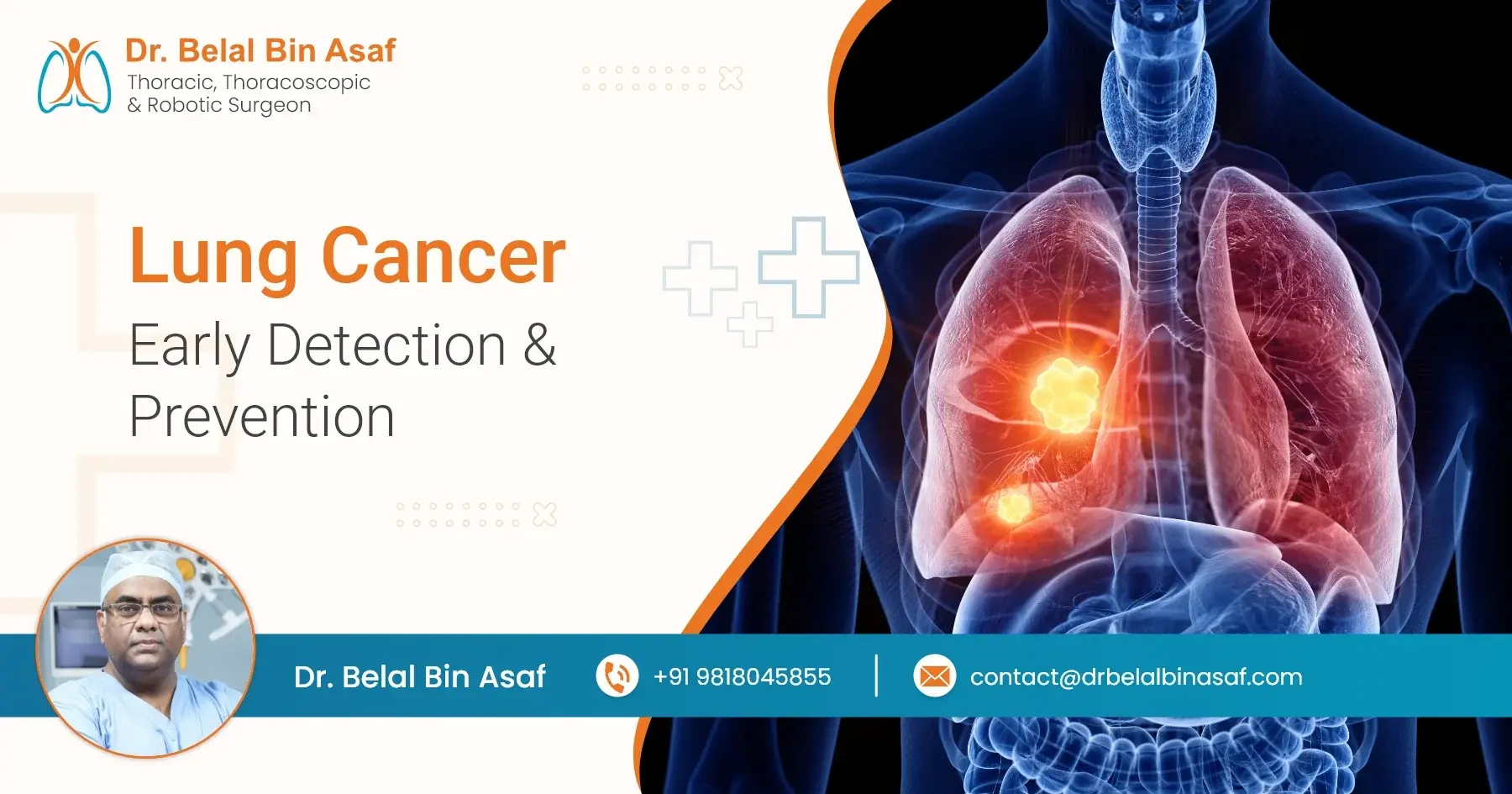Cancer is a disease in which the cells of an organ start to grow and multiply uncontrollably. When cancer starts in the lungs, it is called lung cancer. It is the most lethal cancer globally and kills more than breast, colorectal and prostate cancer combined. The only thing that has shown to improve survival from Lung cancer is early detection. However, early detection of lung cancer is not easy. In the early stages, Lung cancer often has no symptoms and symptoms usually occur after significant growth of the tumour or due to impingement upon other organs. By the time the symptoms come, most patients are in an advanced stage which leads to poor survival.
Therefore the only way to detect lung cancer early and improve survival is to screen for Lung cancer, which brings us to the question of what is Lung Cancer Screening? Screening for any cancer means that we test for cancer when there are no symptoms or history of that disease. The idea is to find a condition early, when treatment may lead to better outcomes and prolonged survival.
Based on available research evidence, the only screening test that is of some benefit is a special kind of computed tomography scan known as Low-Dose CT scan (LDCT). During an LDCT scan, the patient is laid on a table, and a CT machine uses a low dose of radiation to take detailed images of the lungs. The scan only takes a few minutes and is not painful at all. These images are then analysed by experienced radiologists who look for anything in the lungs that may be Lung Cancer.
So who are the people who should be screened for Lung Cancer?
Yearly Lung Cancer Screening with LDCT is recommended for people who—
· Are between the age of 55 and 80 years.
· Have a history of heavy smoking (30 pack-years or more)
· Smoke now or have quit within the past 15 years.
A pack-year is smoking an average of one pack of cigarettes per day for one year. For example, a person could have a 30 pack-year history by smoking one pack a day for 30 years or two packs a day for 15 years.
Because smoking is one of the most important causes of Lung Cancer, heavy smokers are at high risk of developing lung cancer. If they develop lung cancer, screening can detect it early. Effective and timely treatment after that may lead to cure and improve survival.
Though screening is a painless process, there are some risks associated with Lung Cancer Screening. There may be cases where the test may suggest that a person has lung cancer when no cancer is present. This is known as a false-positive result. False-positive results can lead to more testing and sometimes even surgery to remove a suspicious lesion that could have more risks. There is also a small risk of radiation exposure by yearly CT scans that can cause cancer in otherwise healthy people. That’s why screening is done only in high-risk individuals where the benefits of early detection outweigh the risk of additional testing and surgery.
While screening helps detect Lung Cancer early, the only true way to improve survival is to prevent lung cancer development by reducing the risks involved.
Although there is no 100 % success mantra for prevention of lung cancer, one can still reduce the chances by taking the following measures: · Don’t smoke. If you’ve never smoked, don’t start.
· Stop smoking now. Quitting smoking reduces the risk of lung cancer, even for those who’ve smoked for years.
· Avoid second-hand smoke. Second-hand smoke is as dangerous as smoking itself. So avoid areas where people smoke, such as bars and restaurants, and seek out smoke-free options.
· Protect yourself from carcinogens (Substances that cause cancer) at the workplace.
· Eat a healthy diet with lots of fruits and vegetables. Avoid taking large doses of vitamins in pill form, as they may be harmful.
· Regular Exercise is essential and helps reduce your risk of cancer.

